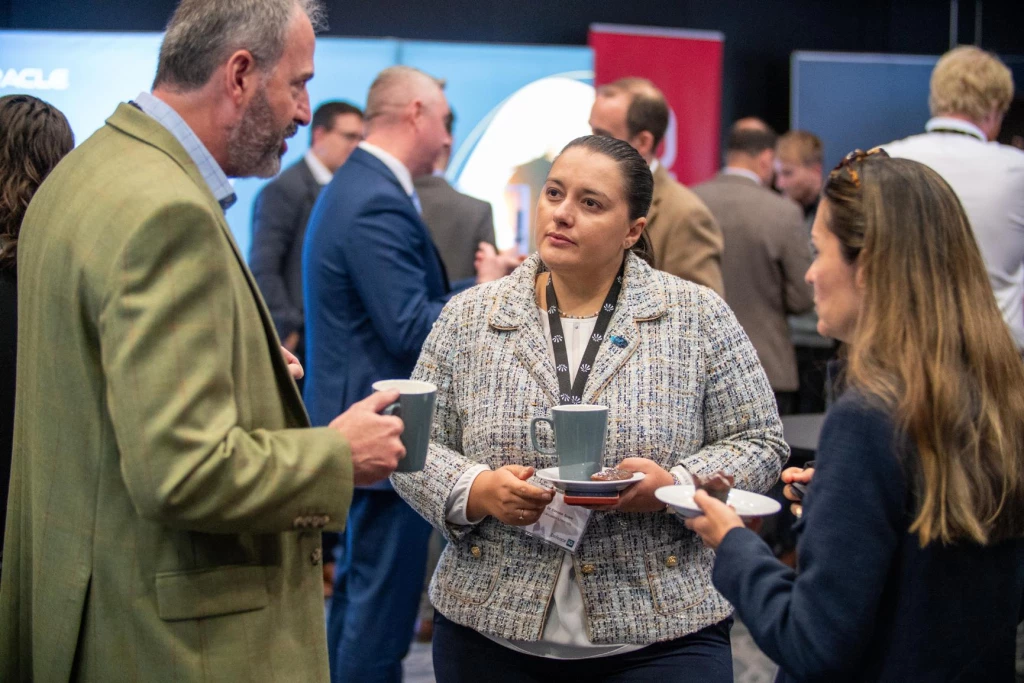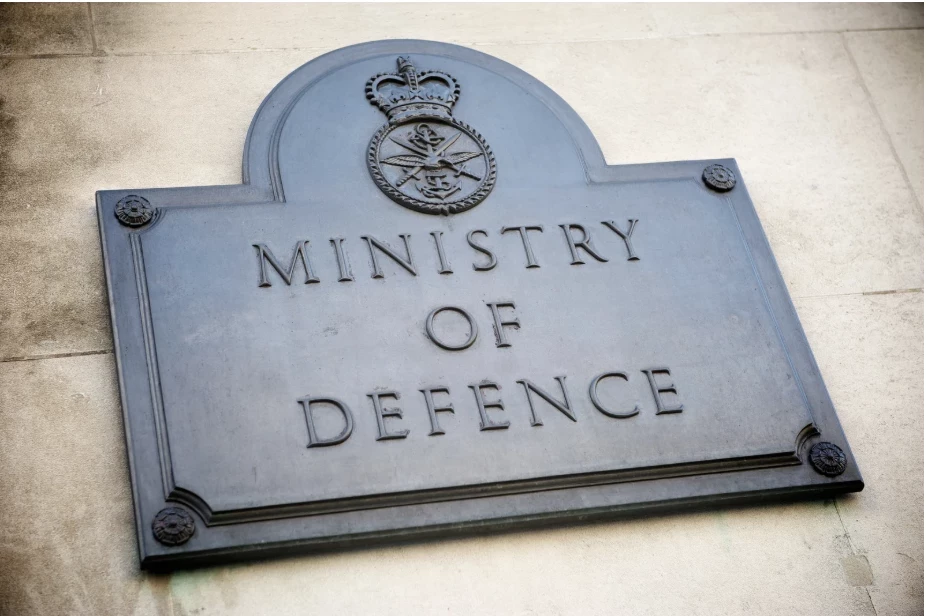Addressing the Innovation Adoption Problem in Defence
Add bookmark
As part of our ongoing research into innovation and enterprise transformation in Defence, Defence iQ's Editor spoke to Adrian Holt - former RAF officer, founding member of Strategic Command's jHub Innovation Unit and now currently at Capita consulting - to talk all things UK defence innovation and how we might address the 'adoption problem'.
The next SDSR is scheduled to be published this year. What would you like to see prioritized? What have been the biggest changes in UK Defence since the last 2015 publication?
Priority must go to accelerating the rate of adoption of new tech from traditional and non-traditional suppliers, mil-tech and dual-use tech. Defence and Security needs to be able to access the whole panoply of opportunity that is open to it quickly.
Over the last five years Defence has proved that it can find and access new technology, but it has had less success in adopting it at scale and pace. Therefore, SDSR should not prioritise any particular tech over any other; things are moving too fast and the chance of backing the right horse is slim. Instead, it must invest in capability agility i.e. the ability to rapidly identify, adopt and exploit new technologies before our opponents. That will require institutional change before we buy any shiny kit. Enabling coherence, collaboration and efficiency will be key to achieving it.
“We don’t have an innovation problem – quite the opposite, a thousand innovative flowers are blooming across Defence, whether in the Services, the DE&S or the DIO, the Ministry itself, or our peerless scientists in Dstl. But we do have an ‘innovation adoption’ problem” - General Tom Copinger-Symes, RUSI lecture.
I ask everyone the same question in discussions about innovation in Defence, and I’m going to do the same now. What are the biggest challenges to innovation, and how do we get over them? I’m going to ask that you avoid the most common response – culture – and give me a different answer!
Firstly, set the incentives you need to get the behaviours that you want.
To elaborate, I’m not sure ‘culture’ is really the problem. In my experience, most people are up for change and innovation and many try hard to drive it. What your respondents may be referring to is actually ‘observed behaviours’ which are wrongly assumed to be culturally driven. It’s what drives and incentivizes these behaviours that we need to get to the bottom of, and that takes us to law, policy, concepts and doctrine, contractual obligations (although you could argue that these are all driven by an underlying culture).
You can’t change most of that overnight, but what you can change overnight are the incentives that gave us this system with a new set of incentives that drive these things to change over time. Sir Richard Barons asked me, at the first Defence iQ Disruptive Tech for Defence Conference that I spoke at, “So what should we do to enable innovation at scale in Defence?” I had about 30s seconds to answer, and what sprang to mind was the disparity between the Amazon and Defence incentives.
In Defence we are taught that policy and process are roughly correct and that you will be rewarded for adhering to them, perhaps improving them slowly over time, as long as you follow the correct procedure i.e. the assumption is that “we are roughly correct.” Amazon start from a very different assumption: “We are not good enough and you will be rewarded for helping us do better.” These mind-sets drive very different behaviours; the former, stagnation, and the latter, growth. Safi Bachall writes very well on the topic of setting incentives for innovation in Loonshots where he makes the case for C Suite level Incentive Officers for this very reason.
Another aspect is psychological safety, but that’s a cultural issue for sure so I’m not allowed to mention it, but if I was I’d recommend that Amy Edmondson’s ‘The Fearless Organisation’, be made compulsory reading for anyone given a leadership position in Defence.
Now you’ve transitioned out of the military and work as a consultant for Capita. What’s surprised or pleased you the most, in terms of the way that business approaches innovation and strategy, versus Defence?
Firstly it’d like to say that there are ink spots of world class innovation brilliance in Defence. However, what has been really great to find is the way the presence of a bottom line drives evidence-driven decision making and incentivises validation of assumptions and opportunities. That rigour and discipline has enabled us to adopt new technology capabilities at an incredible pace. Patrick Gormley, head of Capita Consulting says, “disrupt or die; standing still is not an option” and the company is living by that mantra. Again, its’s about incentives. We have an imperative to do things differently and it’s driving rapid, positive change.
There are concerns that the defence innovation ecosystem is itself becoming too complex, with too many organisations or ‘hubs’ and disparate strategies emerging from the MOD, Army, Air Force, and Joint Staff. From your perspective, do you think there’s enough collaboration and alignment of common goals in UK Defence today? How can we ensure that we’re not overcomplicating the process for SMEs and start-ups moving forward?
It could be argued that it is too complex and incoherent and the problem is likely expanding but these issues need to be addressed sensitively and without stifling any of the great work that is being done or the enthusiasm that drives it. Central control is not the answer. Initially, my assumption is that the application of standards and best practice would help and that the DIU could step into that policy role.
Secondly, there needs to be visibility/coordination of funding and priorities of some sort. This isn’t just bean counting, this is also to enable efficiency, collaboration on common projects and the avoidance of overlap, which remains a problem. This is a role probably best suited to Strategic Command.
Starting small, I’d like to see them begin by producing nothing more complex or expensive than a comprehensive innovation portfolio. The assumption, to be tested, is that pan Service/TLB visibility of what is going on would illuminate the situation and enable people to focus on emerging priorities and proactively select next steps. (For clarity, I’m talking about priorities for improving and enabling the innovation ecosystem here, not specific innovation project priorities which a portfolio would, of course, provide.)
Covid-19 has shown that Defence, National Security and public safety must be considered together and the blurring of the lines between mil-tech and civ-tech is increasing. We have to build relationships across traditional industry boundaries to exploit that.
Defence and Government need a better, end to end process to enable start-ups to navigate MOD procurement without being overburdened by them. Start-ups simply don’t have the resources to cope with the traditional system or navigate its current complexity. I believe that big business has a part to play here. Commercial rules mean there is only so much that can be done from within a government entity, and as such we need a comprehensive, collaborative approach that works to the benefit of all stakeholders if we are really going to bring the massive talent that is available in start-up-land to bear for Defence and Security.
Looking outside of the UK, what opportunities for collaboration in digital technology development are taking place, or should take place, with our partners and allies?
Defence and the industrial base works pretty well with the U.S. on many fronts, most recently in the establishment of the UK Defence Digital Services, a smaller version of the legendary outfit set up by Chris Lynch in the U.S. However, I’m not sure we exploit our European relationships as well as we should beyond the capital project, e.g. Eurofighter, A400M etc. The relationship Israel has created between start-ups, accelerators, the primes and government is inspirational; the UK has much to learn from them.
It’s time to build new relationships between all stakeholders in the Defence, security and national safety community - relationships that play to individual strengths and mitigate their risks i.e. a symbiotic relationship that works to the benefit of all.
But, the simple response is that the answer is almost never in the room; the more you collaborate, the more you learn and the better you get. We also need to think broader than the Defence and Security industries too. Covid-19 has shown that Defence, National Security and public safety must be considered together and the blurring of the lines between mil-tech and civ-tech is increasing. We have to build relationships across traditional industry boundaries to exploit that.
Finally, could you share some insight into Capita’s innovation strategy? What are your priorities and how are you looking to support Defence innovation in your new role?
Priorities are focussed on helping clients recover from the current crisis and build a new, better normal by deriving benefits from existing and emerging technology trends. In this context, Capita seeks to deliver innovative solutions to simplify the connections between businesses and customers, governments and users and to institutionalise innovation as a means for better business and social good.
As for what I want to achieve at Capita, it’s essentially the same as what I wanted to achieve when I was a serving RAF officer. I want to add value and help the UK keep/stay/get ahead of our adversaries by ensuring that the Defence and Security services can access and adopt world-class technology at pace and scale.
It’s time to build new relationships between all stakeholders in the Defence, security and national safety community - relationships that play to individual strengths and mitigate their risks i.e. a symbiotic relationship that works to the benefit of all. Early days but, there is a Chinese proverb that says ‘The best time to plant a tree was 20 years ago, the second best time is now.’



























